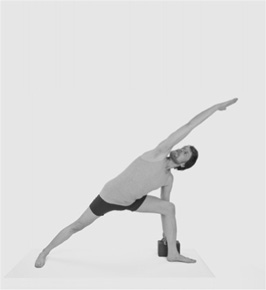Yoga for a Healthy Lower Back (56 page)
Read Yoga for a Healthy Lower Back Online
Authors: Liz Owen

9 (FIG. 4.18)
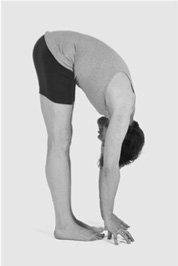
10 (FIG. 3.20)

11 (FIG. 4.19)
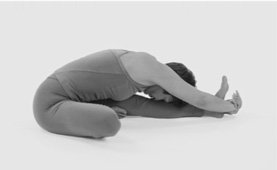
12 (FIG. 4.26)
Practice for Herniated Disk and Pinched Nerve
Herniated spinal disks and pinched nerves are very common diagnoses, often resulting from either sudden or chronic overexertion. Spinal disks are the spongy material that cushion the vertebrae, and when those disks become overly compressed or tweaked out of alignment, they can bulge, slip, or otherwise “herniate.” The injured disk often slides into a position where it puts pressure on nearby nerve endings, causing tingling, numbness, or pain down the length of your nerves.
1
These gentle poses can help support your recovery from this condition, and open your body in a way that gives your nerves room to calm down and heal.
  1.  Pelvic Tilt
â¢Â  Provides therapeutic, mindful rest for your lower back
â¢Â  Gently elongates your lower back musculature
  2.  Reclining Crescent Moon Pose
â¢Â  Provides a gentle, stretch for your lower back with your back completely supported by the floor
â¢Â  Helps release knots and scar tissue in the myofascia and strengthens the supporting ligaments of the lumbar spine on the elongated side of your body
  3.  Partner-Assisted Sacrum Traction
â¢Â  Elongates the sacrum and lumbar muscles, creating space for the path of nerve roots from the spine into your hips and legs
â¢Â  Opens spaces between spinal vertebrae, helping to relieve pressure on intervertebral disks and nerves
  4.  Reclining Sacral-Balancing Pose
â¢Â  Stretches the buttock (gluteus maximus) and elongates the lumbar musculature
â¢Â  Helps release muscle tightness and tension throughout your lower back
  5.  Downward-Facing Dog Pose
â¢Â Â
Dangling Down-Dog
and its partner-assisted variations traction the spine and lengthen the lumbar musculature,
opening the spaces between vertebrae, and help to relieve pressure on disks and nerves
â¢Â  Helps to balance the spinal muscles to bring the two sides of the spine into alignment
  6.  Chair-Seated Twist
â¢Â  Releases tightness in the spinal muscles and lengthens the entire spine, helping the vertebrae and disks to shift into proper alignment
â¢Â  Creates traction in the spine, especially at the sacrum and lumbar areas. In the case of disk injuries, the traction can help create height at the intervertebral spaces, which brings elasticity into the disks and relief from pain
  7.  Full Chair Pose
â¢Â  Strengthens the lumbar muscles, which helps to support and protect nerve roots as they move through the spine
2
â¢Â  Helps realign spinal vertebrae
  8.  Side Angle Pose
â¢Â  Strengthens the supporting ligaments of the lumbar on the elongated side of your body
â¢Â  Elongates the lumbar and creates flexibility along the outer hips and trunk
  9.  Half-Moon Pose
â¢Â  Tones and strengthens all the main movers and stabilizers of your legs, hips, and spine
â¢Â  Strengthens and elongates the lumbar musculature, helping to support and protect nerve roots as they move through the lumbar spine
10.  Half Balanced Warrior Pose
â¢Â  Strengthens and tones all the spinal musculature, especially the muscles in the lumbar spine
â¢Â  Increases fluidity in your hamstrings and hips
11.  Alternate Arm/Leg Prone Backbend
â¢Â  Massages, tones, and strengthens all the myofascia of your lower back while it is in a supported and stable position
â¢Â  Increases flexibility in your lower and mid back
12.  Reclining Bound Angle Pose
â¢Â  Provides restorative, therapeutic rest
â¢Â  Resting your feet and thighs on a bolster helps to elongate your lumbar spine and allows it to rest along the ground, releasing subtle stresses and tensions
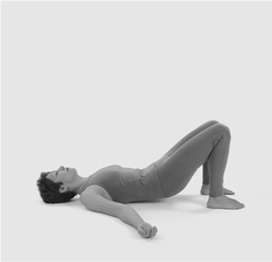
1 (FIG. 2.1)

2 (FIG. 4.2)
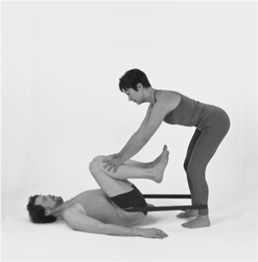
3 (FIG. 3.5)

4 (FIG. 3.6)
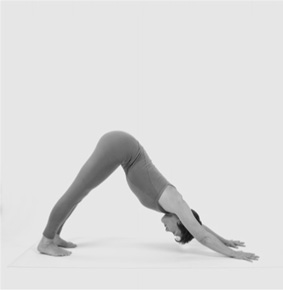
5 (FIG. 4.6)
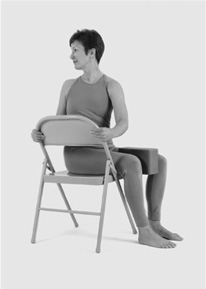
6 (FIG. 3.24)

7 (FIG. 6.8)
